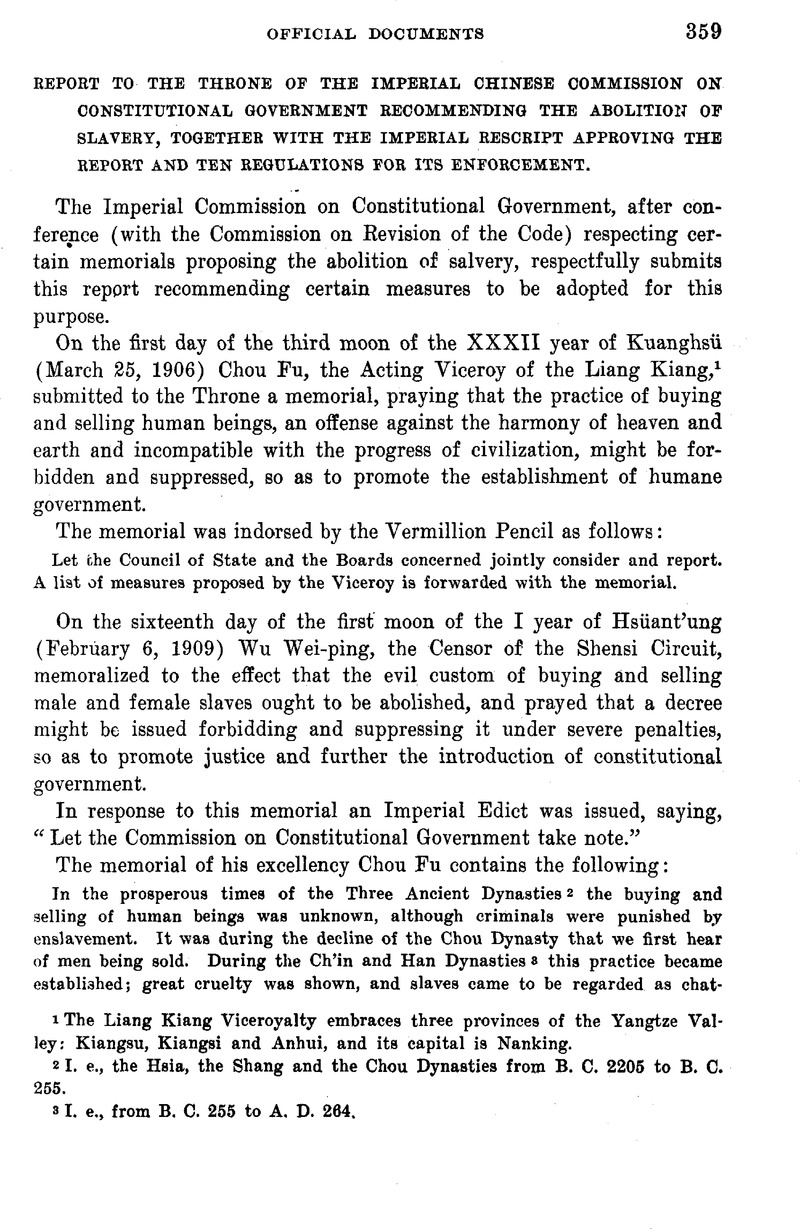No CrossRef data available.
Published online by Cambridge University Press: 04 May 2017

1 The Liang Kiang Viceroyalty embraces three provinces of the Yangtze Valley: Kiangsu, Kiangsi and Anhui, and its capital is Nanking.
2 I. e., the Hsia, the Shang and the Chou Dynasties from B. C. 2205 to B. C. 255.
3 I, e., from B. C. 255 to A. D. 264.
4 I. e., not stamped with the seal of the local official which gives legal force to a document.
5 Two prefectures in the province of Anhui.
6 Certain outcasts whose origin is obscure, believed to be descendants of rebels of the Twelfth Century A. D.
7 Until the recent revision of the code, the penalty for certain grave offenses required that the near relatives of the criminal should be given as slaves to meritorious officials.
8 Although the feudal system of China was abolished 225 B. C, the conquest of the Empire by the present Manchu Dynasty tended to revive it in the northern
9 The Six Canons of the T'ang Dynasty.
10 A. D. 1662-1723.
11 As in the case of a free woman who marries a slave